Hoga Clams

|
Clams Seen on Our Hoga Island
Reef Snorkel
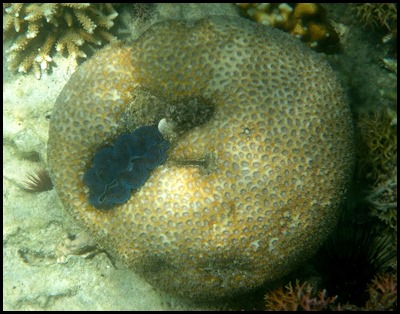 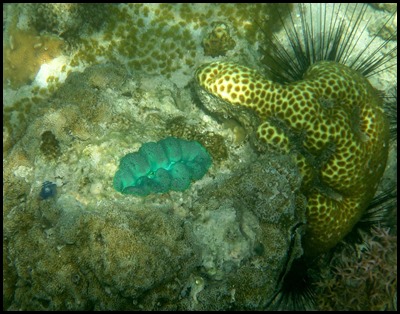 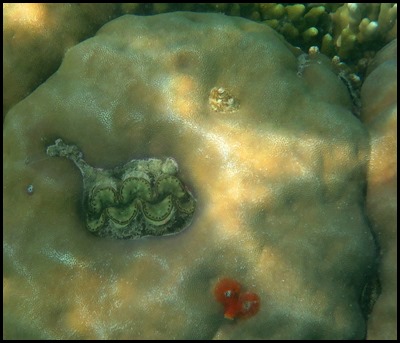 Clams have always fascinated us, if
you can sneak up on them without casting a shadow or letting them feel you have
moved the water near them, they stay puffed up. The second they sense you they
withdraw in a split second.
Wiki says: The maxima clam (Tridacna maxima),
also known as the small giant
clam, is a species of bivalve mollusc found
throughout the Indo-Pacific
region. They are much sought after in the aquarium
trade, as their often
striking coloration mimics that of the true giant
clam; however, the maximas maintain a
manageable size, with the shells of large specimens typically not exceeding 20
centimetres in length.
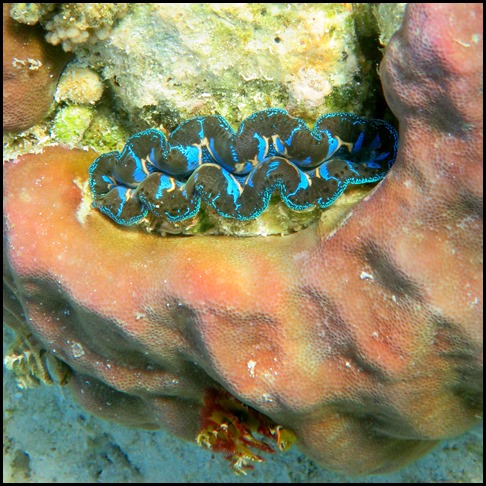 A sessile
mollusc, the small giant clam attaches itself to rocks or dead coral and siphons
water through its body, filtering it for phytoplankton, as well as extracting
oxygen with its gills. However, it does not need to filter-feed as much as other
clams since it obtains most of the nutrients it requires from tiny
photosynthetic algae known as zooxanthellae.
Beginning life as a tiny fertilised
egg, the small giant clam hatches within 12 hours, becoming a free-swimming
larva. This larva then develops into another, more developed, larva which is
capable of filter-feeding. At the third larval stage, a foot develops, allowing
the larva to alternately swim and rest on the substrate. After eight to ten
days, the larva metamorphoses into a juvenile clam, at which point it can
acquire zooxanthellae and function symbiotically. The juvenile matures into a male clam after two or three
years, becoming a hermaphrodite when larger (at around 15 centimetres in
length). Reproduction is stimulated by the lunar cycle, the time of day, and the
presence of other eggs and sperm in the water. Hermaphroditic clams release
their sperm first followed later by their eggs, thereby avoiding
self-fertilisation.
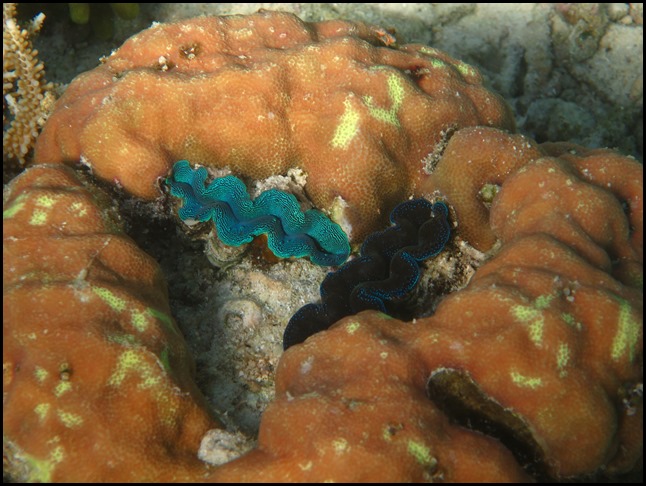 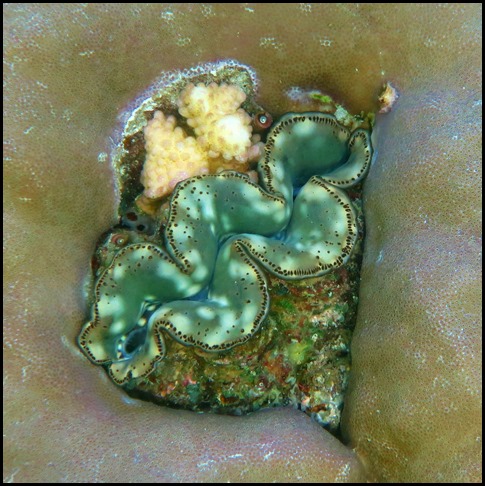 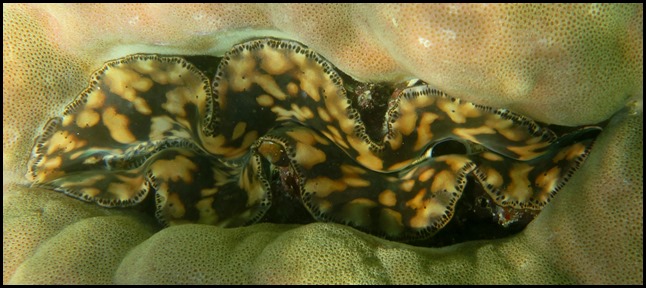 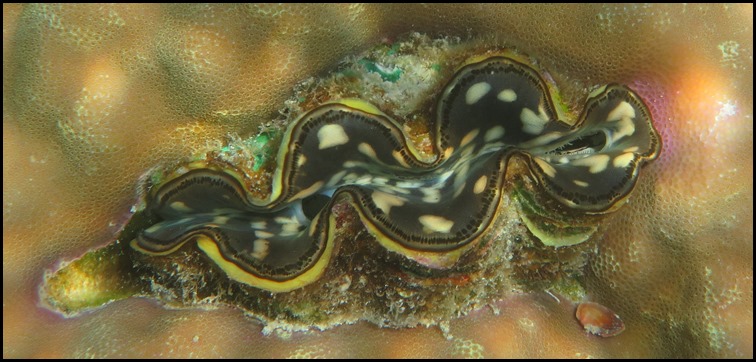 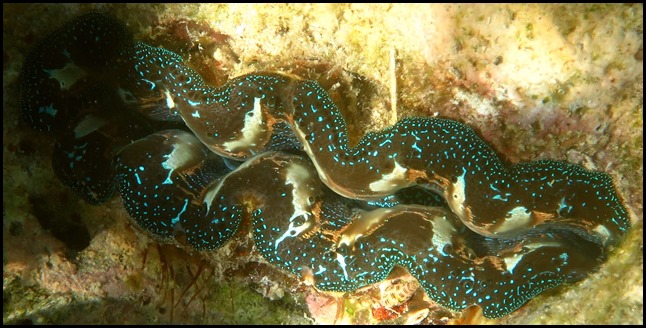 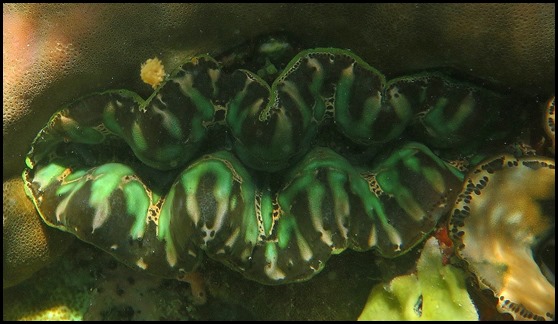 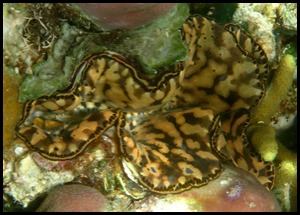 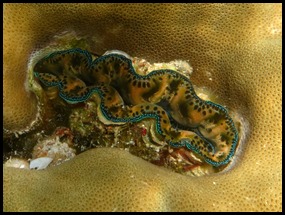 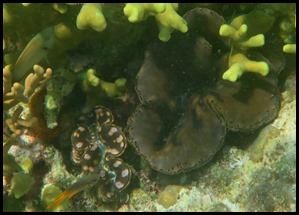 Description: Bivalves have two valves on the mantle. These siphon water through the body to extract oxygen from the water using the gills and to feed on algae. The maxima is less than one-third the size of the true giant clam (Tridacna gigas). Shell: Adults develop a large shell that adheres to the substrate by its byssus, a tuft of long, tough filaments that protrude from a hole next to the hinge. Mantle: When open, the bright blue, green or brown mantle is exposed and obscures the edges of the shell which have prominent, distinctive furrows. The attractive colours of the small giant clam are the result of crystalline pigment cells. These are thought to protect the clam from the effects of intense sunlight, or bundle light to enhance the algae's photosynthesis. Maxima produce the colour white in their mantle by clustering red, blue and green cells, while individual Tridacna derasa cells are themselves multi-coloured.
  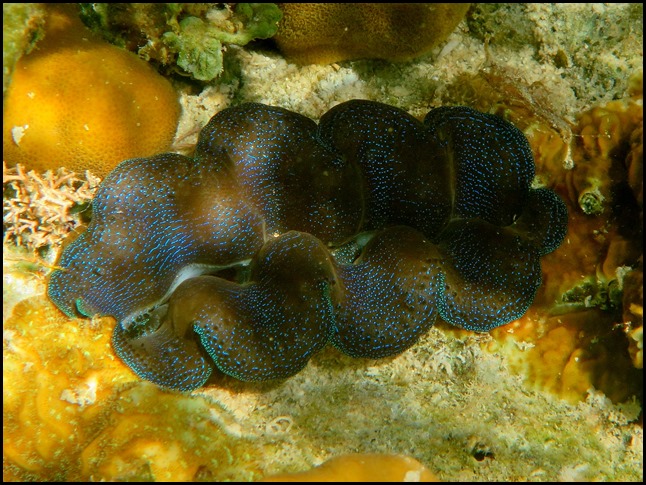  Distribution and Habitat: The small giant clam has the widest range of all giant clam species. It is found in the oceans surrounding east Africa, India, China, Australia, Southeast Asia, the Red Sea and the islands of the Pacific. Found living on the surface of reefs or sand, or partly embedded in coral, the small giant clam occupies well-lit areas, due to its symbiotic relationship with photosynthetic algae, which require sunlight for energy production.
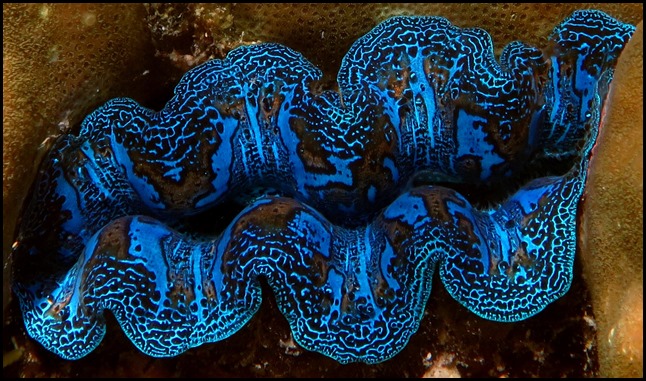 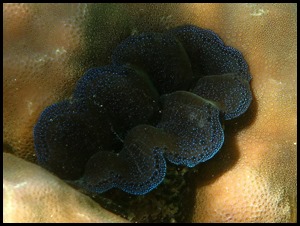 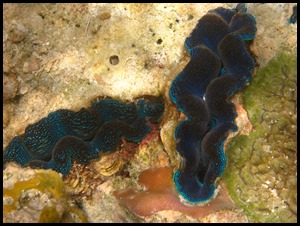  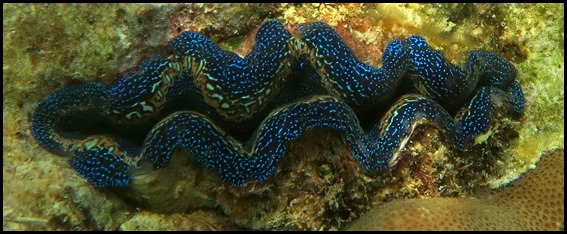 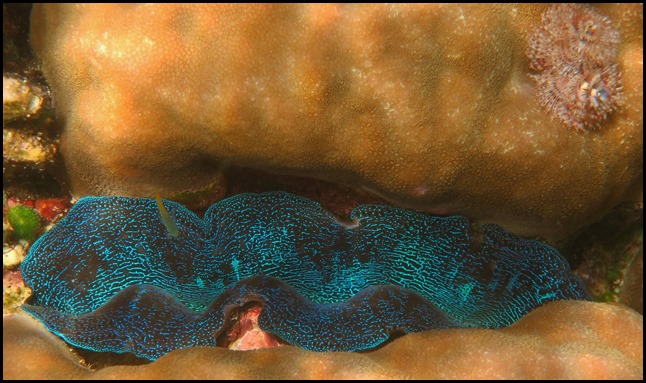 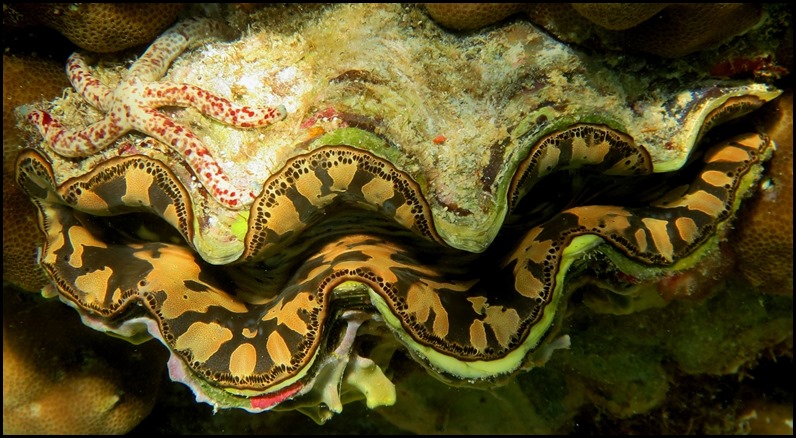 An incredible sight – a brightly coloured starfish sitting on this clam, shame it
wasn’t all puffed out but how thrilling to see.
ALL IN ALL THESE CERTAINLY
ADDED TO OUR COLLECTION OF COLOURS
FASCINATING
CREATURES |